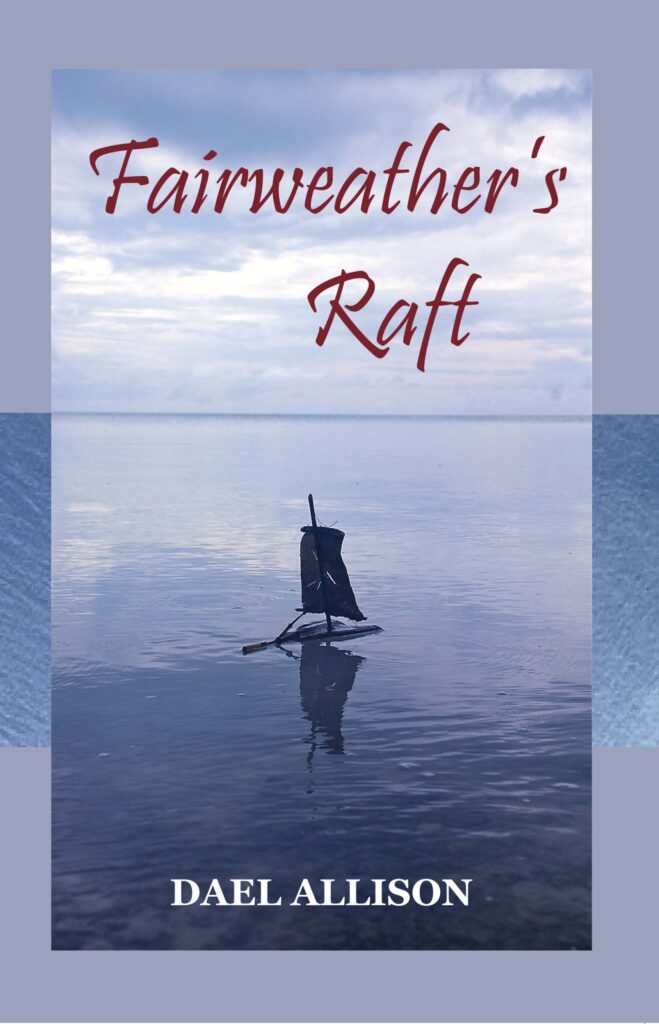Gilian Telford, reviewing Dael Allison’s Fairweather’s Raft (Mascara—2nd June 2013)
On the cover of Fairweather’s Raft a toy-like sailing vessel is adrift on a glassy ocean, its sail reflected as a shadow beneath the surface – and beneath the surface is where the reader is led by Dael Allison in this fine collection. Based on extensive research and a strongly empathic response to her subject Allison guides with skilful passion through a key period in the obsessive, turbulent and estranged life of Ian Fairweather (1891-1974) ‘one of Australia’s most iconic and enigmatic artists.’ (i)
Allison’s poems centre around the trope of a perilous journey, specifically the perilous journey made by a sixty year old Fairweather between Darwin and Timor in 1952 on a flimsy, self-made raft. Given up for dead by searchers, he made landfall after sixteen days on Roti, Timor’s most western island. He was then deported to England but made his way back to Australia – Bribie Island, Queensland – where he finally abandoned his peripatetic existence and spent his last two decades, ‘the most stable and productive period of his life.’ (p. 80)
Allison provides a summary of Fairweather’s biography and development as an artist at the end of the collection. This essay warrants inclusion and is likely to be of interest to both informed readers and others not familiar with Fairweather’s life or work. We learn of his abandonment by family during the first ten years of his life, his troubled years in UK, his time as a prisoner of war, and his determination to pursue his art despite family opposition. We are introduced to his years of wandering through Asia, the strong influences of his time in China and of his arrival in Melbourne in the 1930s. After this time he spent increasing periods in Australia ‘but he remained a loner, living rough between Melbourne and far north Queensland. Escape became a primary motif whenever dissatisfaction manifested:’ (p.78) Allison also outlines information about her research which, in addition to the written sources and personal contacts listed, took her to Bribie Island, to Darwin, and to Kettle’s Yard at Cambridge University, UK in her ‘quest to understand his work and his life’ (p.82)


